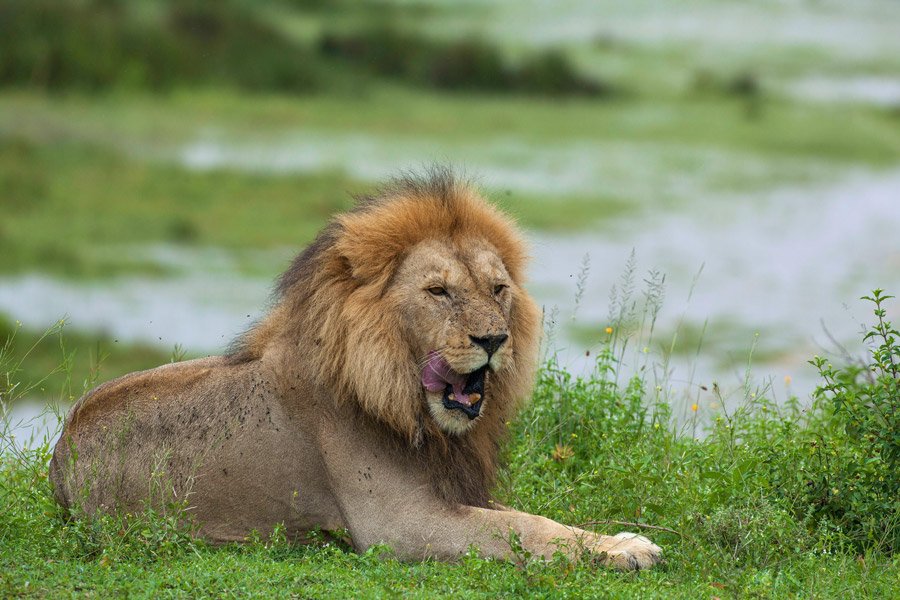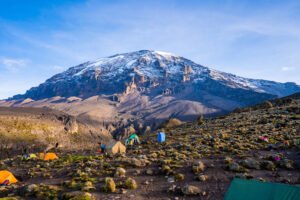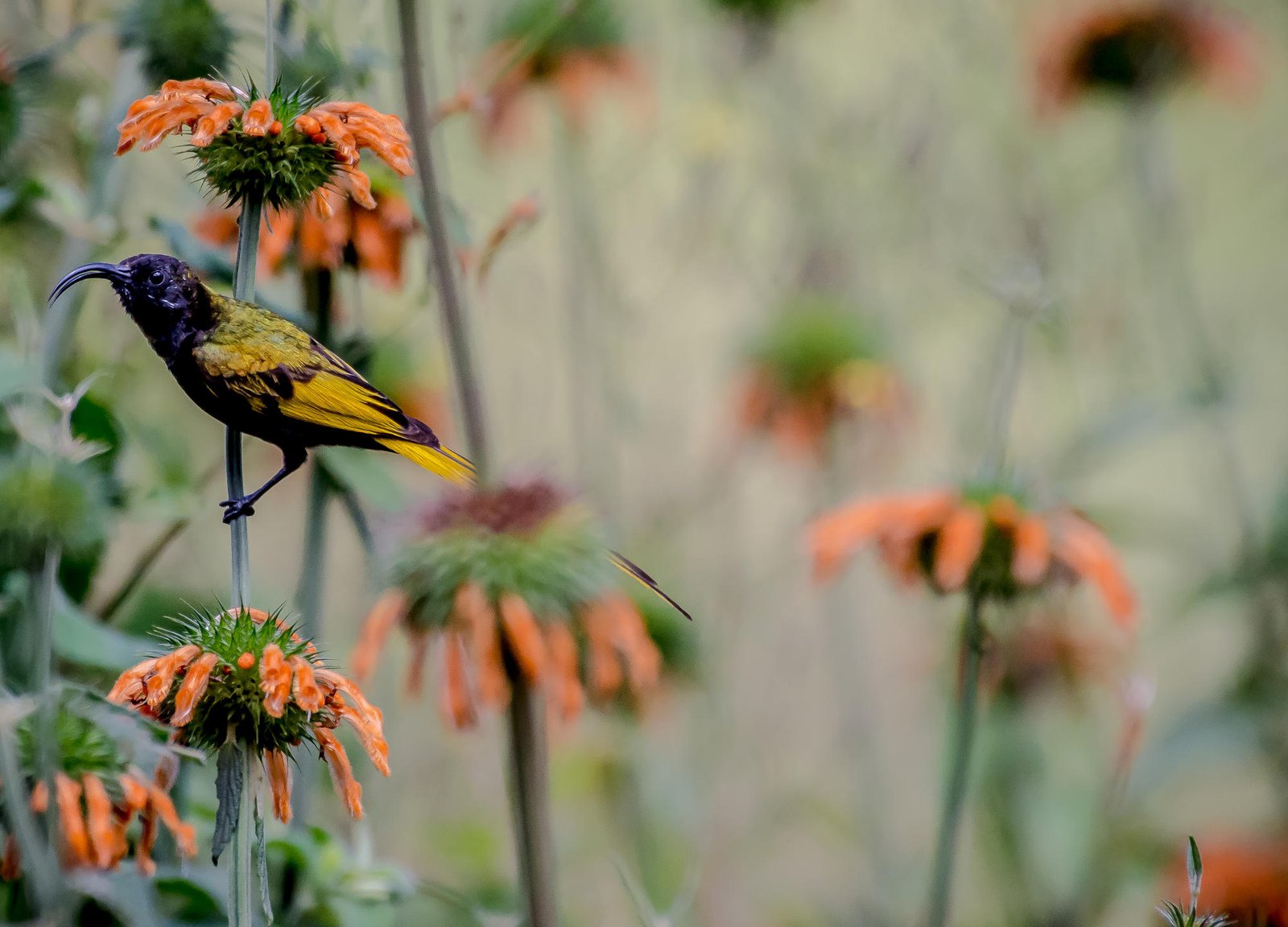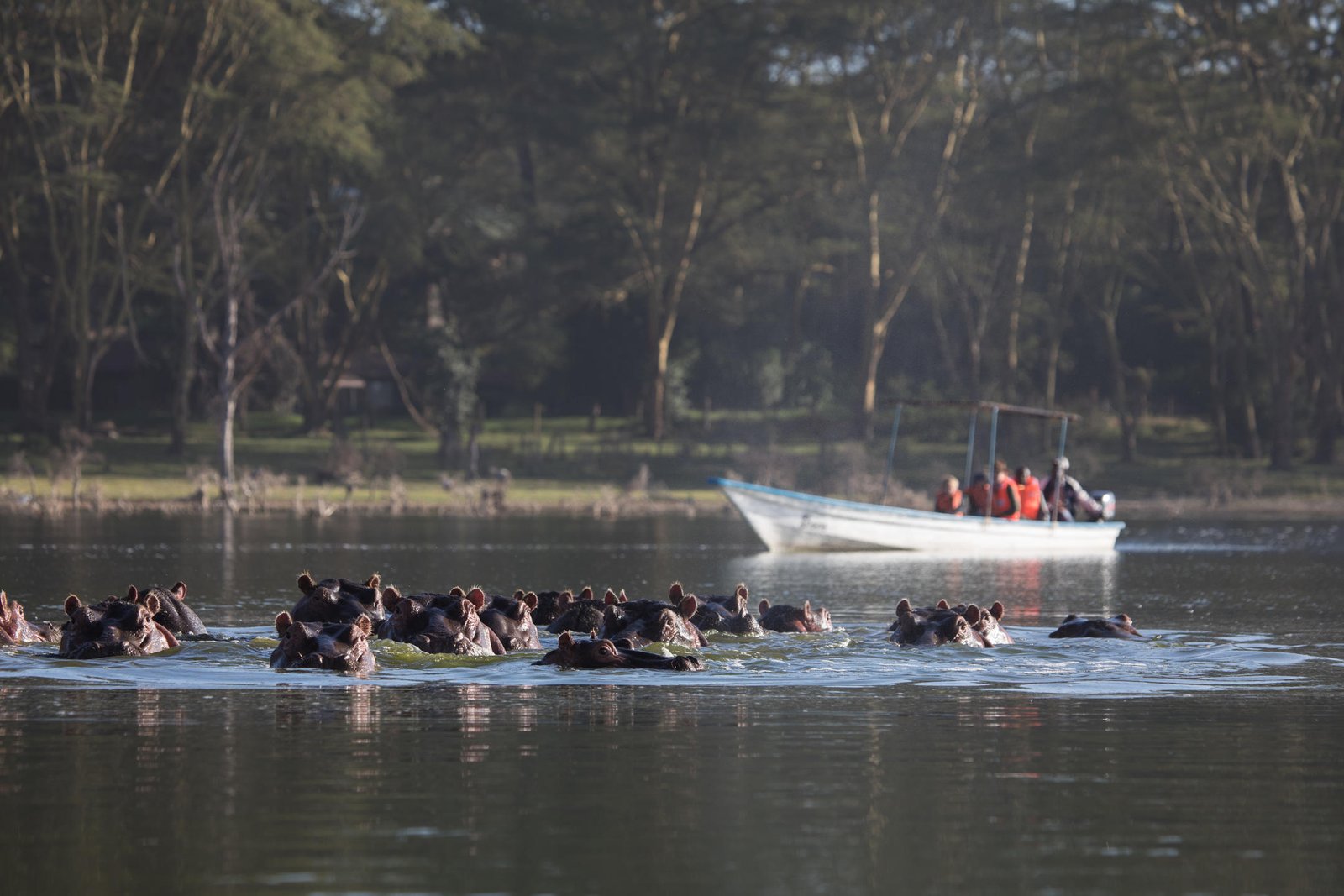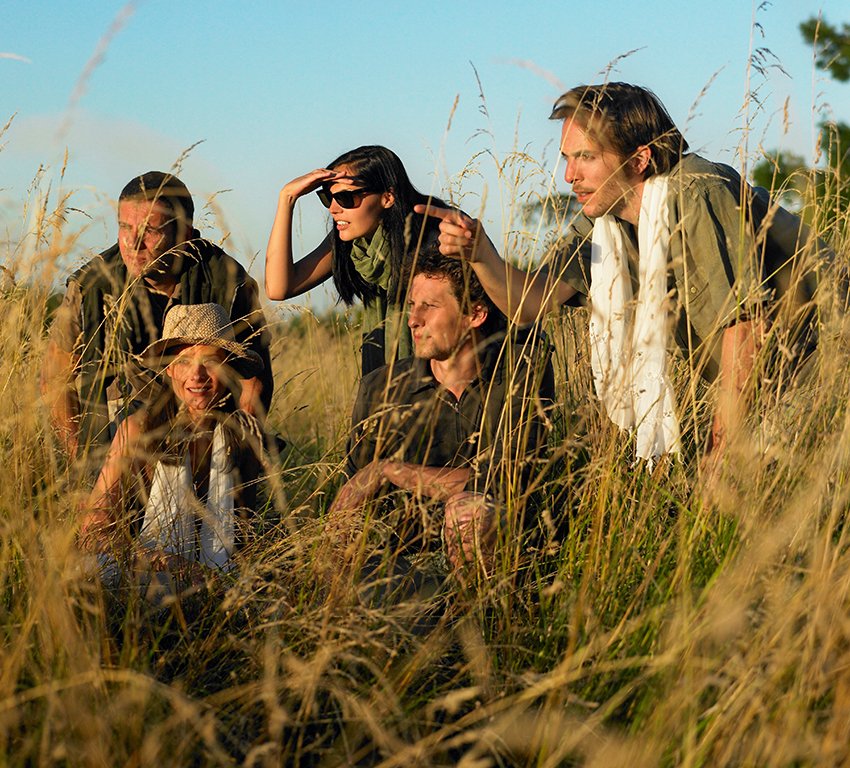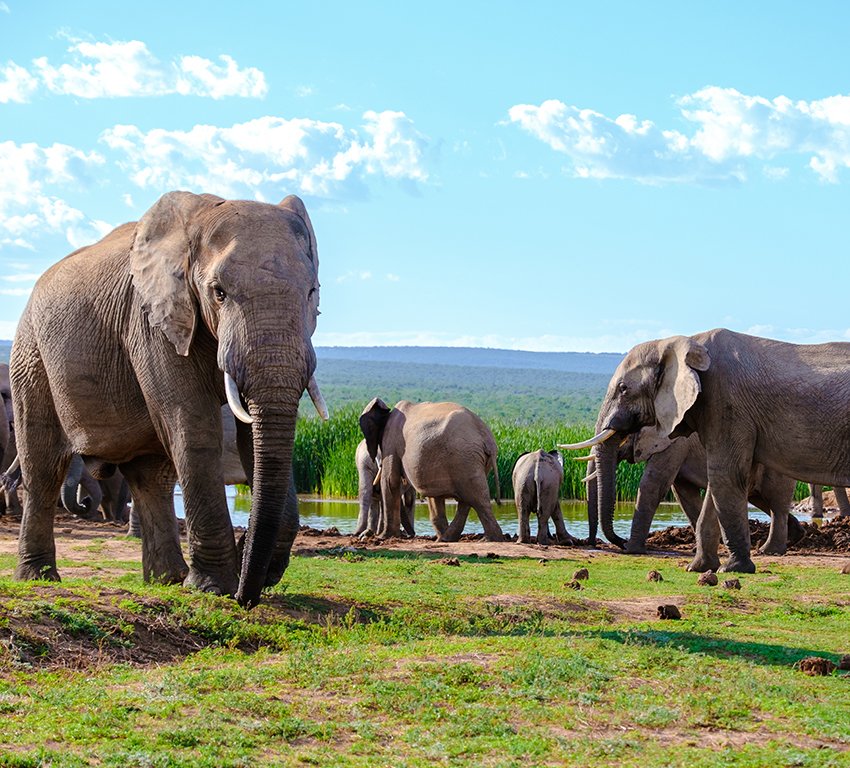What Animals Can You Encounter on a Wildlife Safari in Kenya?
- Buffalo
Swahili Name: Nyati
The African Cape buffalo, known for its irascible nature, holds the distinction of being a member of the renowned Big 5 and is widely acknowledged as one of the most formidable creatures on the African continent. Possessing an infamously unpredictable temperament and formidable strength, this buffalo species has few natural adversaries, with lions and large crocodiles being notable exceptions.
Wondering Where to Spot Cape Buffalos in Kenya?
While the Cape buffalo is among the most ravenous grazers in Africa, it is not particularly choosy when it comes to its preferred habitat. Nevertheless, these creatures have an extensive thirst to satisfy, thus relying heavily on Kenya’s perennial water sources found in regions such as the Masai Mara, Amboseli National Park, and Meru National Park, the latter of which boasts some of the most substantial buffalo herds you can encounter during a Kenyan wildlife safari.
- Cheetah
Swahili Name: Duma
The cheetah, Earth’s fastest land mammal, capable of reaching speeds exceeding 100 km/h (60 mph), seeks expansive and open terrain for pursuing its prey. Witnessing these swift felines in pursuit is among the most exhilarating experiences you can encounter on a wildlife safari in Kenya.
Wondering Where to Observe Cheetahs in Kenya?
The Masai Mara’s predominantly flat and treeless environment provides an ideal hunting domain for these remarkable Kenyan creatures. Moreover, the presence of numerous termite mounds serves as vantage points—cheetahs ascend to the summits to surveil the wildlife of the Masai Mara and identify their next potential meal.

- Crocodile
Swahili Name: Mamba
The Nile crocodile, extensively distributed throughout Kenya, primarily inhabits aquatic ecosystems such as lakes, rivers, swamplands, and marshes. On average, adult males can attain lengths of up to five meters (16 feet) and weigh as much as 750 kilograms (1,650 pounds).
This formidable reptile ranks as Africa’s largest freshwater predator, capable of overpowering virtually any creature within its domain. Nile crocodiles exhibit a versatile diet, primarily consuming fish, reptiles, birds, and mammals. Notably, every August, approximately a million wildebeests brave the perilous journey across the Mara River’s Kenyan banks, providing an annual feast for these apex predators!
Where to Spot Nile Crocodiles in Kenya:
- Masai Mara
- Amboseli National Park
- Meru National Park
- Elephant
Swahili Name: Tembo
In Kenya’s various wildlife reserves, elephants are a common sight, with the exception of Lake Nakuru. However, for a chance to witness some of the largest herds of these majestic creatures, along with their impressive tusks, in East Africa, Amboseli National Park is the place to be. In Amboseli, magnificent gatherings of these gentle giants gather to graze and quench their thirst at the park’s perennial swamps and lakes.
On clear, cloudless days, Amboseli also offers some of the most breathtaking vistas of Mount Kilimanjaro. From this vantage point, you can often observe Kenya’s wildlife set against the stunning backdrop of Africa’s highest peak.
Where to Encounter Elephants in Kenya:
- Amboseli National Park
- Masai Mara
- Samburu National Reserve
- Meru National Park
- Laikipia

- Giraffe
Swahili Name: Twiga
Giraffes, another iconic presence among Kenya’s diverse wildlife, are a frequent and highly sought-after sight for safari enthusiasts. Witnessing the world’s tallest land animals adopting their distinctive wide-legged stance to drink water is a true delight.
Where to Spot Giraffes in Kenya:
You can encounter various subspecies of giraffes during your Kenya wildlife safari, including:
- Rothschild’s giraffe, one of the most endangered: For up-close encounters, visit The Giraffe Centre or stay at Giraffe Manor in Nairobi. Lake Nakuru National Park is also a crucial stronghold for this species.
- Reticulated giraffes: For the best sightings, venture to Samburu National Reserve or Meru National Park.
- Masai giraffes: Abundant in Kenya’s prominent parks such as the Masai Mara and Amboseli.
- Hippopotamus
Swahili Name: Kiboko
Named after the ancient Greek term for ‘river horse,’ it’s no wonder that you’ll encounter substantial congregations of these creatures in Kenya’s rivers, lakes, and swamps. Despite the hippopotamus’s visual resemblance to a pig, its closest living relatives belong to the cetacean family (comprising whales, dolphins, porpoises, and more). Due to its remarkably aggressive and unpredictable disposition, the hippo ranks among the world’s most perilous animals, particularly when they emerge from water to graze during the twilight hours.
If you happen to be staying at a safari lodge or camp located alongside a river or lake, you’ll be treated to the daily, melodious drama performed by territorial male hippos.
Where to Observe Hippos in Kenya:
While these creatures are abundant near permanent water sources throughout the country, the premier locations to witness hippos on a Kenyan wildlife expedition include:
- The swamps and lakes of Amboseli National Park
- The Talek and Mara Rivers in the Masai Mara
- Streams and rivers within Meru National Park
- Lake Nakuru National Park

- Hyena
Swahili Name: Fisi
Hyenas, perpetual opportunists of the African wilderness, maintain a close proximity to predator kills, often seizing the chance to pilfer meat from the likes of lions and cheetahs. Exhibiting a distinctive and somewhat eerie laughter-like vocalization, these scavengers are known for their ability to snatch morsels from almost any predator. Despite their reputation for savage behavior and somewhat unconventional appearance, hyenas, alongside vultures and jackals, perform a crucial role in the ecosystem by recycling carrion – they serve as Nature’s diligent recyclers!
During your Kenyan wildlife safari, it’s not uncommon to drift off to the distant, echoing serenade of spotted hyenas. These animals are widespread in Kenya and can be found in areas teeming with plains game, which sustains the predator-prey cycle.
Where to Encounter Hyenas in Kenya:
- Masai Mara
- Amboseli National Park
- Meru National Park
- Leopard
Swahili Name: Chui
The elusive and solitary Panthera pardus, better known as the leopard, can transform an ordinary Kenya wildlife safari into an unforgettable, lifelong memory. Renowned for its unparalleled mastery of camouflage and stealth, the leopard remains a highly elusive creature, making it a coveted sighting for adventurers. This predator’s captivating allure lies in its regal beauty; its striking coat has captivated human fascination for generations. With a sinuous, feline grace, leopards move as though they are liquid gold in motion.
Seeking out leopards in Kenya may require a bit of effort or a stroke of extraordinary luck. To catch a glimpse of this enigmatic member of the Big 5, venture to the Masai Mara or Samburu National Reserves for the best possible opportunities.
Samburu, characterized by arid woodlands adorned with rugged rocky formations and dense riverine foliage, proudly holds the distinction as Kenya’s premier destination for leopard sightings. Although much of the Masai Mara features expansive grasslands, which are more favorable for cheetahs, lions, and hyenas, prime leopard habitats can also be found along the riverside areas.

- Lion
Swahili Name: Simba
Panthera leo, the undisputed monarch of the African wilderness, reigns supreme. The sight of lions during a Kenya wildlife safari is not only incredibly thrilling but taps into a primal fascination that stirs the soul. The initial impression upon encountering this member of the illustrious Big 5 in Kenya is the sheer magnitude of their presence. Their robust, barrel-chested forms, prominent chins, and resounding roars serve as spine-tingling reminders that the untamed realm still bows to their authority.
Lions, Africa’s most formidable predators, engage in the pursuit of sizable prey such as zebra, buffalo, giraffe, hippopotamus, and even young elephants. Should you ever be fortunate enough to witness lionesses in the throes of a hunt, the experience is nothing short of heart-pounding, etching an indelible memory in your soul.
Where to Encounter Lions in Kenya:
Within the expansive realm of Masai Mara’s wildlife, lions are so abundant that they once claimed the spotlight in their own BBC nature documentary series, “Big Cat Diary.” It goes without saying that the Masai Mara stands as an exceptional destination to observe formidable lion prides throughout the year.
Additionally, while exploring Lake Nakuru National Park, keep a keen eye out for tree-climbing lions. Although lions are not inherently adapted for tree scaling or perching on branches, it is believed that some may ascend trees to catch a cooling breeze or evade ground-dwelling biting insects. This sighting is exceedingly rare, so consider yourself exceptionally fortunate if you chance upon these arboreal felines!
- Rhinoceros
Swahili Name: Kifaru
While the renowned Big 5 can be found in Kenya’s Masai Mara, tracking down rhinoceroses has become increasingly challenging. Since the dawn of the twentieth century, these magnificent creatures have teetered on the brink of extinction.
In the 1980s, rampant poaching slashed Kenya’s black rhino population to under 300 individuals. However, thanks to pivotal conservation endeavors in locales such as Lewa and Ol Pejeta, the numbers of black rhinos have been steadily rebounding—though the species remains critically endangered.
Where to Spot Rhinoceroses in Kenya:
To catch a glimpse of rhinos during a wildlife safari in Kenya, your most promising options are Lake Nakuru National Park, as well as:
- Lewa Wildlife Conservancy: A secure sanctuary for black rhinos.
- Ol Pejeta Conservancy: The residence of two of the world’s last surviving northern white rhinos.
- Wild Dog
Swahili Name: Mbwa Mwitu
A sighting of wild dogs, also known as painted wolves, is an exceedingly rare and exhilarating spectacle on any safari expedition. Unfortunately, their populations face significant threats from habitat fragmentation, human-wildlife conflicts, and disease outbreaks, resulting in the African wild dog being classified as an endangered species.
These canids encompass all the attributes of an exemplary predator: acute intelligence, remarkable cooperation, exceptional hearing, formidable physical prowess, superb vision, and remarkable speed. If you ever have the privilege of your safari guide announcing the presence of wild dogs, you’re in for an unmistakable rush of excitement!
Where to Spot African Wild Dogs in Kenya:
The population of wild dogs is on the rise in the Samburu and Laikipia regions, making the chances of encountering them during your Kenyan wildlife safari quite favorable. In fact, Laikipia has now emerged as the second-most significant sanctuary for wild dogs in Africa, trailing only behind Botswana in importance.
 A family of elephants in Tarangire National park, Tanzania.
A family of elephants in Tarangire National park, Tanzania.
- Wildebeest
Swahili Name: Nyumbu
Although wildebeest can be found in significant numbers across the majority of Kenya’s wildlife parks, it’s during the period between July and November that you can witness the extraordinary congregation of about a million of them in a single location. This spectacle marks the arrival of the Great Wildebeest Migration in the Masai Mara, a phenomenon recognized as one of the last colossal terrestrial wildlife movements on the planet—an argument for its status as the greatest animal spectacle on Earth!
August, in particular, is hailed as the prime time to observe the exhilarating river crossings from the Serengeti into the Mara, making it the most sought-after period for a wildlife safari in Kenya. Given the popularity of the Masai Mara during this season, it’s advisable to commence your preparations at least a year in advance. Furthermore, we recommend considering accommodations within one of the private conservancies adjacent to the Masai Mara National Reserve. Here, you can relish a more tranquil safari experience while still being within proximity to the Migration’s pivotal sites.
Where to Spot Wildebeest in Kenya:
Wildebeest, also known as gnus, abound in most of Kenya’s wildlife parks, including:
- Masai Mara
- Amboseli National Park
- Meru National Park

- Zebra
Swahili Name: Pundamilia
These striped equines, known as zebras, inhabit a wide range of habitats across Kenya, including savannahs, grasslands, woodlands, shrublands, and mountainous regions. While you can encounter them in the majority of Kenya’s wildlife areas, several hundred thousand of them join the Wildebeest Migration into the Masai Mara around July each year.
Where to Spot Zebras in Kenya:
Among the wildlife in Kenya, you’ll encounter two distinct subspecies: the common plains zebra, which can be found in nearly all wildlife parks in Kenya, and the striking Grevy’s zebra, also known as the imperial zebra. Grevy’s zebra holds the distinction of being the largest extant wild equid and is also the most endangered zebra species. For the best opportunities to observe Grevy’s zebra during your wildlife safari in Kenya, head to the Samburu National Reserve and the Laikipia region.
- Rarities & Other Highlights
You’ve probably heard of the Big 5 and maybe even the intriguing Little 5 (comprising the elephant shrew, ant lion, rhinoceros beetle, buffalo weaver, and leopard tortoise). However, have you ever come across the Samburu Special 5?
Samburu National Park is situated in the northern reaches of Kenya, where the lush green expanses of the country give way to arid scrublands and colossal rocky formations. This exceptional terrain provides a habitat for animals uniquely adapted to the drier, rock-strewn environment. In this off-the-beaten-path safari destination, the stars of the show are unquestionably the Samburu Special 5:
- Gerenuk (also known as the giraffe gazelle)
- Somali ostrich
- Grevy’s zebra
- Reticulated giraffe
- Beisa oryx
 Chimpanzees
Chimpanzees
15 Chimpanzees
While chimpanzees are not indigenous to Kenya, in 1993, when a rescue center in Burundi faced closure, the Ol Pejeta Conservancy in Laikipia extended a welcoming hand. They inaugurated the Sweetwaters Chimpanzee Sanctuary with the noble mission of offering a lifelong sanctuary to orphaned and mistreated chimpanzees originating from West and Central Africa. It stands as the sole location where you can encounter these captivating primates during a Kenyan wildlife safari.



 A family of elephants in Tarangire National park, Tanzania.
A family of elephants in Tarangire National park, Tanzania.

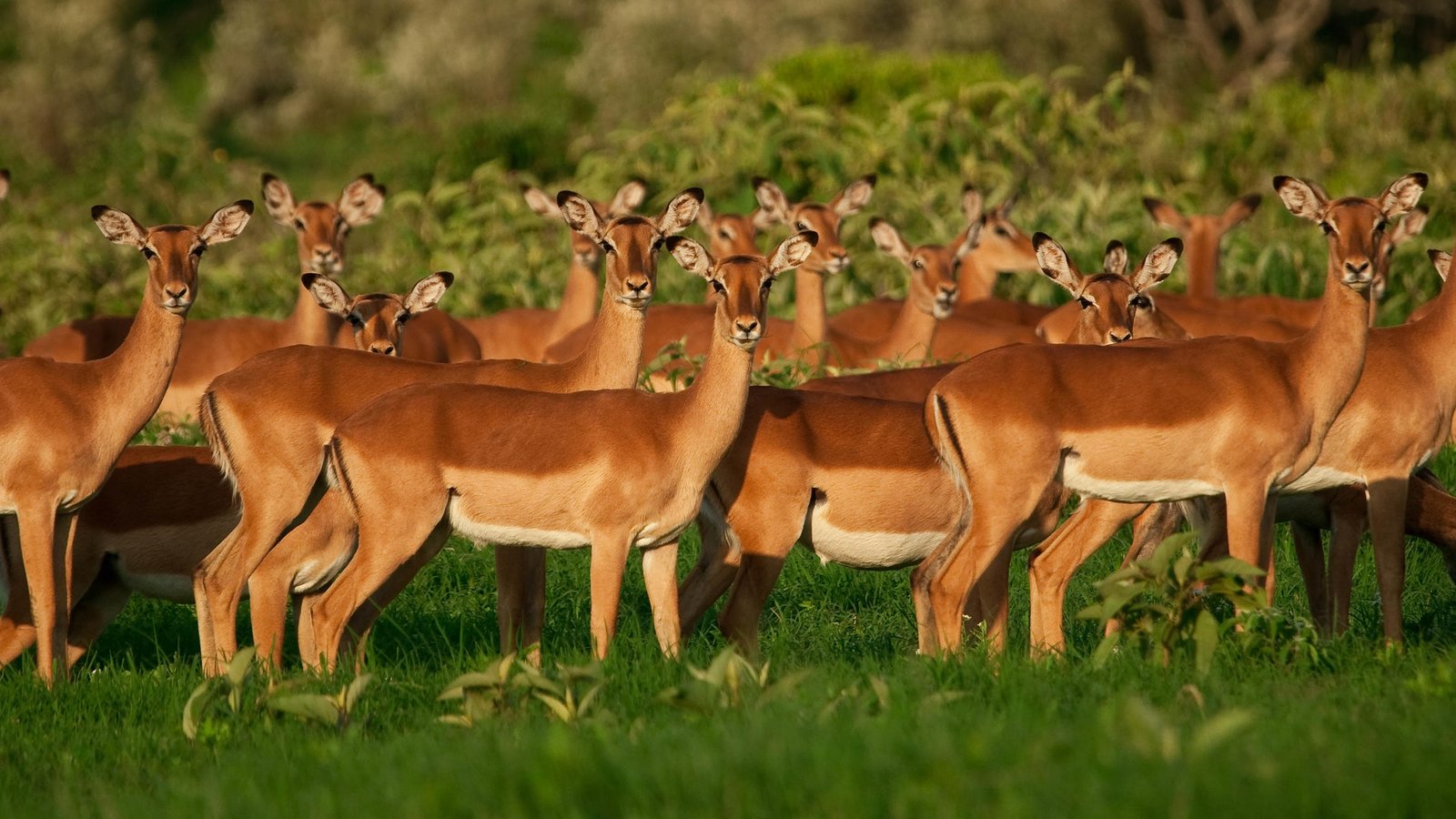











 Chimpanzees
Chimpanzees